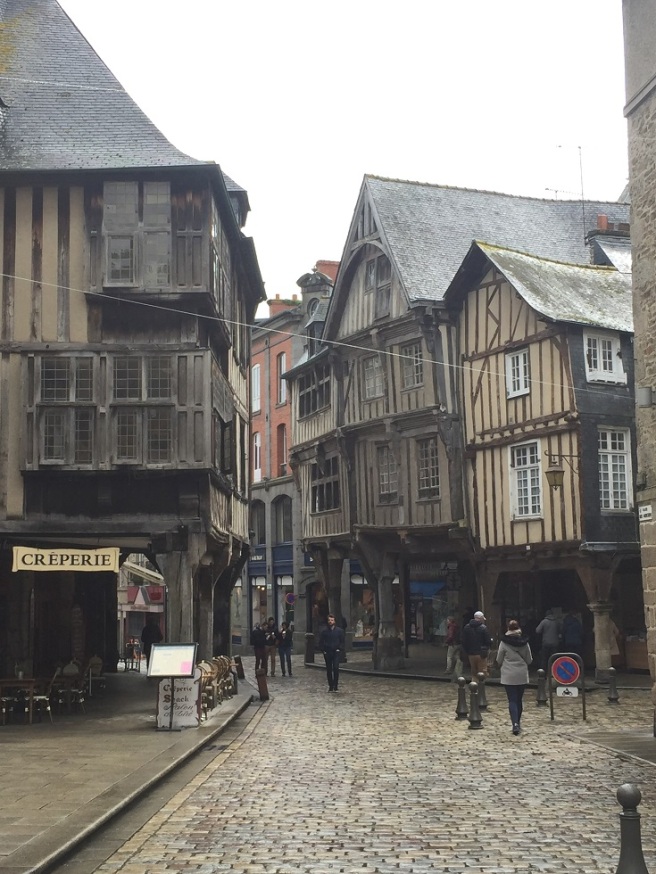
Dinan is a beautiful town in Brittany with a history going back prior to the 12th century. It is a walled city with over a mile of ramparts to be explored and a great selection of half-timbered houses that set a fairyland ambience to walk through.
The surrounding countryside is a beautiful farming area that was alive with blooming mustard as we drove through. It is located above the River Rance with a great location relative to other sites in Brittany,
Our hotel happened to be in the historic home of Auguste Pavie a French explorer and diplomat whose bust is displayed in the nearby English Garden with its access directly to the ramparts.
The city located well above the river has been connected by a steep commercial byway since the 12th century called Jerzual Street.
We were totally entertained by the ancient town and fine food but while we were there a media event was going on with live music, runway fashion shows and multiple functions for International Young Fashion Designers.
Old meets new meets fine food.







































































































































































































